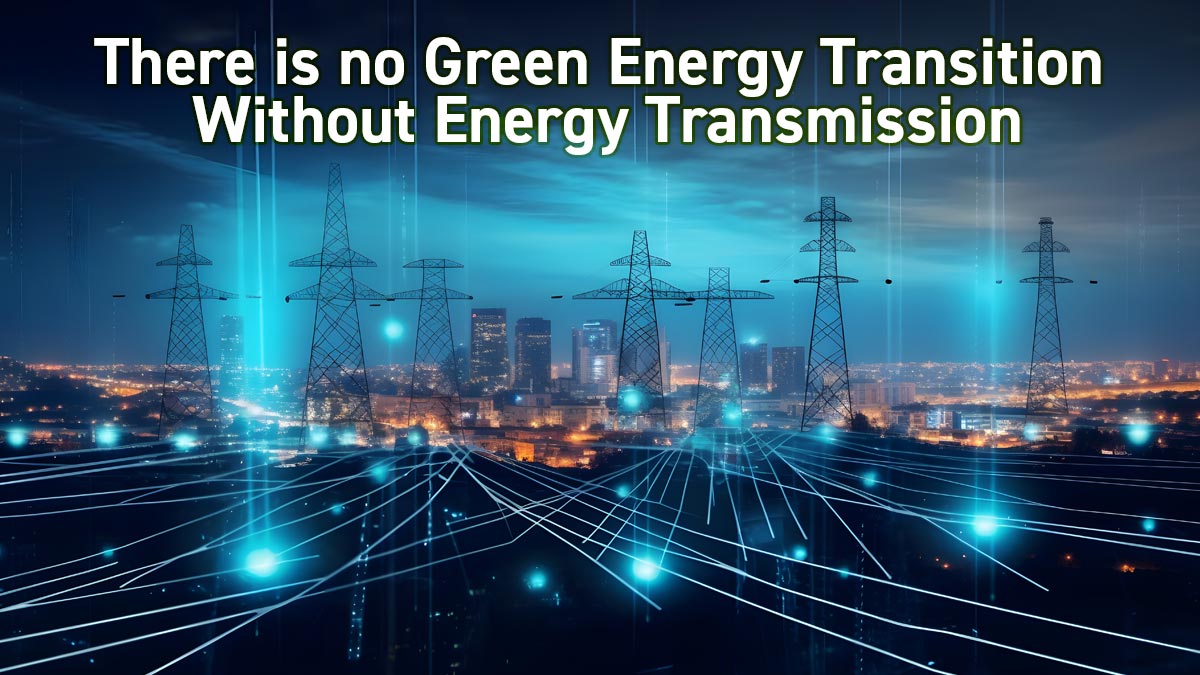The global push to transition to renewable energy sources has reached a critical juncture. With climate change escalating alarmingly, reducing carbon emissions and embracing cleaner, greener energy alternatives has become an urgent priority. However, a fundamental truth must be acknowledged. With a robust energy transmission grid to transport this renewable energy efficiently, achieving net-zero emissions and securing a sustainable future will be possible.
Energy demand is surging globally, driven by the imperative to reduce carbon footprints, ensure affordable energy supplies, and fortify energy security. Renewable technologies such as wind, solar, and hydroelectric power lead the charge, providing clean energy to homes, businesses, and entire societies. The International Energy Agency (IEA) reports that to achieve net-zero emissions by 2030, global electricity production must surge by a staggering 92% compared to 2020, a mere seven years away. This underlines the urgency of ramping up renewable energy projects. However, a crucial question lingers: can our current grid infrastructure accommodate the burgeoning demands of renewable energy? The answer is a resounding no. The energy transition’s success hinges on developing an appropriate infrastructure—a robust energy transmission grid.
Modernise our energy transmission grids
Today’s grid infrastructure needs to be better suited for tomorrow’s needs. To fully unleash the potential of renewable energy, we must expand and modernise our energy transmission grids. These grids act as the lifeblood of the energy system, efficiently transporting generated electrons to where they are needed, precisely when they are required. This ensures the delicate balance between supply and demand is maintained, allowing us to harness the full benefits of renewable energy.
Bloomberg New Energy Finance estimates that a staggering 152 million kilometres of power lines are required to achieve net-zero emissions by 2050, double the length of today’s energy transmission grid. To put this in perspective, that’s long enough to reach the sun! This underscores the critical importance of investing in grid infrastructure, without which the dream of net-zero emissions remains out of reach.
Fortunately, there is encouraging news on the horizon. The global pursuit of an accelerated and sustainable energy transition has ignited demand for resilient grid technologies and renewable energy storage solutions. The European Union plans to add 128 gigawatts of new interconnector capacity by 2040, while China aims to double its high-voltage grid capacity by 2050. In the United States, more than 35% of grid assets will be replaced by 2040.
One pivotal technology driving the development of a robust energy transmission grid is high-voltage direct current (HVDC). HVDC allows for efficient electricity transmission over long distances with significantly lower losses than traditional alternating current (AC) energy transmission lines. Notably, HVDC technology is already being deployed in several large-scale projects worldwide, such as the Sunrise Wind project off the coast of New York.
Interconnectors are another essential technology that can facilitate a sustainable energy transition by enabling the sharing of renewable energy resources across borders. Projects like NeuConnect, which connects Germany and the UK via a high-voltage line under the North Sea, exemplify how interconnectors can support the transition to renewable energy on a grand scale.
Moreover, as the power grid transitions toward decentralised power generation, technology like synchronous condensers becomes vital to balance load and manage fluctuations in power frequency. An excellent example is Australia’s adoption of synchronous condensers to stabilise its grid as it incorporates a significant proportion of renewable energies.
Despite these promising developments, significant obstacles remain. Chief among them is the need for faster decision-making and streamlined approval processes. According to the IEA, the average lead time for approving and constructing energy transmission lines in the U.S. and Europe is a staggering ten years for overhead lines and nine years for subsea cables. Simplifying and expediting approvals for grid upgrades and new electrical grids is paramount to eliminating bottlenecks and fortifying infrastructure.
Renewable energy not only combats climate change but also enhances energy security by reducing reliance on fossil fuels. A well-designed energy transmission grid can reduce electricity prices by integrating lower-cost energy resources, benefitting consumers and businesses. Moreover, it is pivotal in reducing carbon emissions and advancing the transition to green energy.
The stakes could not be higher. If we continue on our current path, global emissions will skyrocket from 34 gigatons per year to a staggering 53 gigatons by 2050, exacerbating global warming and jeopardising the future of our planet. The transition to renewable energy supported by a robust energy transmission grid is not just an option but the only path forward. Only by meeting the world’s net-zero targets can we hope to create a sustainable future for ourselves and generations to come.
In conclusion, the journey towards a sustainable, affordable, and reliable energy system powered by renewable energy sources is a monumental task. However, it’s a task that can only be accomplished with a strong and modern energy transmission grid. To truly usher in a green energy transition, we must invest in and streamline the infrastructure that will carry us into a cleaner, more sustainable energy future.
Source www.siemens-energy.com

